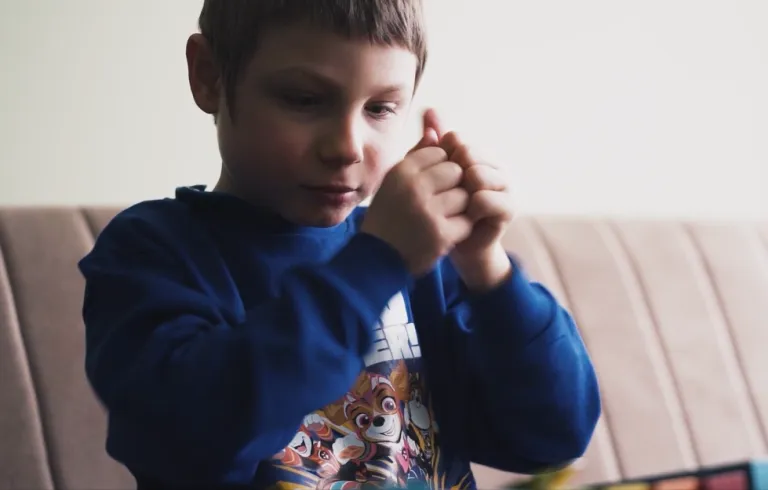Lidzia was born as a premature baby at 29 weeks gestation. In the first year of the girl's life she was diagnosed with spinal-cerebellar ataxia and Hirschsprung's disease. Spinal-cerebellar ataxia is a rare neurological disease characterized by min. difficulties in motor coordination. Hirschsprung's disease is a rare, congenital disorder of intestinal innervation that is genetically determined.
Spinal cerebellar ataxia-what is the disease?
Spinal cerebellar ataxia is a rare genetic disease that affects the body’s motor coordination.
The disease results from damage to the cerebellum or spinal cord, which are important parts of the nervous system responsible for motor coordination and balance.
Spinal cerebellar ataxia comes in various forms, and its severity and rate of progression can vary greatly from person to person.
Symptoms depend on the type of the disease and can include balance and coordination disorders, difficulty speaking and swallowing, tremors in the limbs, problems walking, as well as sensory and spatial perception disorders.
The disease progresses slowly and gradually leads to a deterioration in the sufferer’s functioning.
Unfortunately, cerebellar ataxia is an incurable disease, and treatment is primarily aimed at alleviating symptoms and improving patients’ quality of life.
One treatment is stem cell therapy, which can provide relief and improve the patient’s condition.
What is Lidzi’s story?
Lidia was born prematurely at 29 weeks’ gestation and has been plagued by health problems since the beginning of her life.
She developed bronchopulmonary dysplasia and had difficulty eating.
The girl’s parents noticed that their daughter was not reaching developmental milestones standard for her age, and began regular rehabilitation.
Unfortunately, despite their time and effort, they saw no progress in their daughter.
After consulting with a geneticist, Lidia was diagnosed with an incurable disease: spinal cerebellar ataxia, which caused problems with movement, balance and balance.
Lidia was unable to walk on her own and required assistance from her Parents.
She also suffered from painful muscle spasms throughout her body.
Effects of stem cell therapy
Lidka’s parents learned about stem cell therapy.
After an initial medical evaluation, the baby girl was qualified for stem cell therapy from the umbilical cord.
Five days after the stem cells were administered, Lidia began to walk.
At first with assistance, but every day she made more and more progress and began to walk like a normal child.
The therapy helped her get rid of the symptoms of cerebellar ataxia, and also improved her overall condition.
The painful sprains that were causing great pain to the girl disappeared.
Speech improved significantly, Lidka began to speak in full sentences.
, “In Lidia’s case, these muscle spasms began to quiet down. At first they decreased to fifty per day, but after the fourth administration of stem cells they quieted down completely. Only initially on all fours did Lidia walk up the stairs, and after the fifth administration of the cells, her daughter began to climb the stairs normally on her own.” – says Ms. Ewa Lidia’s mother
Both the attending physician and Lidka’s Parents are in favor of continuing stem cell therapy because the therapy has brought very good results and allowed Lidka to live a normal life.
Rate this article:











